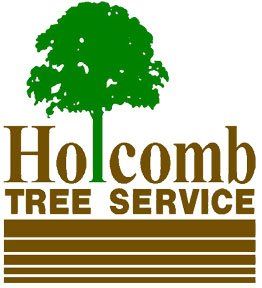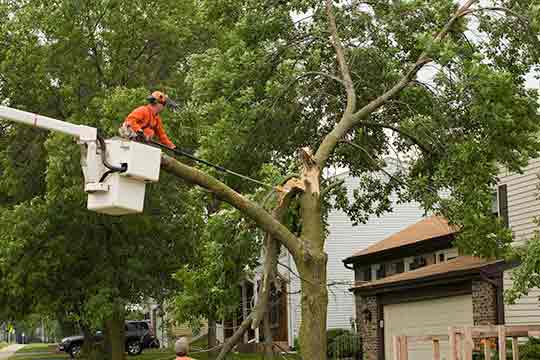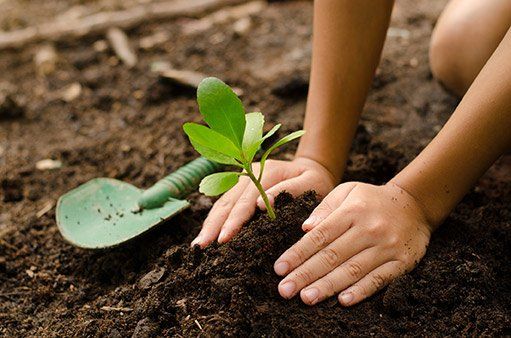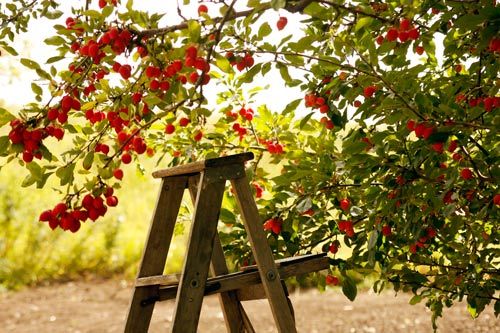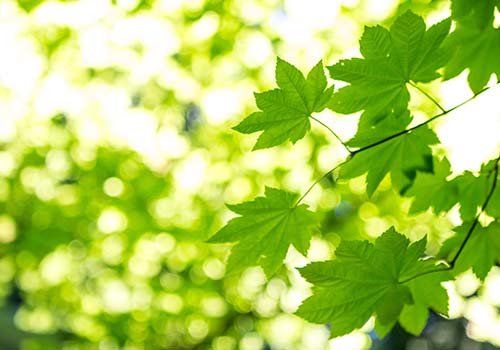
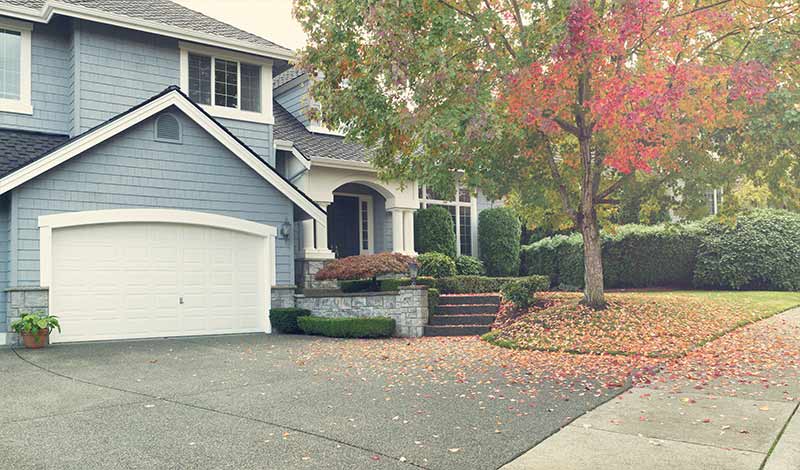
Healthy, appealing trees offer enormous benefits some of which may surprise you. Not only will trees in your landscape design improve curb appeal and increase your home's property value, but they can also aid in energy efficiency. While surprising to learn, trees that shade your home, windows and outdoor AC units can reduce cooling costs in the summer by 35%.
Planting young trees around your home will add curb appeal, but the lack of height and foliage will not help your heating and cooling costs. Therefore, you should plant attractive trees that will grow quickly, producing shade for energy conservation within a few years. This guide, and your contractor's help to maintain will help you know which attractive, fast-growing and shade-producing trees you should consider for your yard.
Crabapple Tree
One tree that adds color, texture and a great deal of shade, while also being easy to grow and maintain, is the Crabapple tree. The tree produces blooms of lush pink flowers in the spring and thick green foliage through the summer and fall. This foliage shades your home with ease.
Since the tree's branches grow up, instead of out, this tree is the perfect option for your home's exterior and outdoor AC units. Be sure to prune away dead flowers and limbs in the early part of winter to ensure new growth in the spring and summer.
River Birch Tree
The river birch is another fast-growing, shade-producing tree that will make a big impact on your landscape design and heating and cooling costs. This tree is also easy to grow, and survives in most soil conditions and requires very little water once established.
Also, the River Birch thrives in areas of your yard that receives full sun. Planting this tree close to a sunny outdoor living area will keep you and your guests under comfortable shade. In addition, planting these trees next to your home's exterior windows will help reduce cooling costs.
It is important to note that the River Birch is a massive tree. On average, it can grow up to 50 or 90 feet tall. Because of its height, avoid planting the tree near power lines.
To ensure the tree remains attractive and healthy, trim off dead foliage and fertilize in the fall.
Crepe Myrtle Tree
A Crepe Myrtle is definitely one of the easiest trees to grow since it does not require any special soil conditions and is heat and drought-tolerant. Its unique shape has been compared to a mushroom cloud. This tree has either a single trunk or a multitude of trunks that intertwine together.
You will love the floral blooms that occur at the end of spring and early summer. In most climates, the blooms will continue through the early part of fall as well. Available in a large variety of colors including white, pink, red and purple, the Crepe Myrtle tree adds appeal, shade and value to your home.
While easy to grow, the Crepe Myrtle does require a decent amount of maintenance to keep it healthy and attractive. To protect its shape, pruning off dying foliage and branches at the end of winter is important.
Flowering Dogwood
No matter which species you choose, a Flowering Dogwood is a great option for areas of your yard that receive full sun or partial shade.
In the fall season, trim away dead overgrowth and dying blooms before fertilizing. This will help the tree survive the harsh winter temperatures.
To learn more about planting and maintaining your fast-growing, shade-producing trees, contact the professionals at Holcomb Tree Service today.
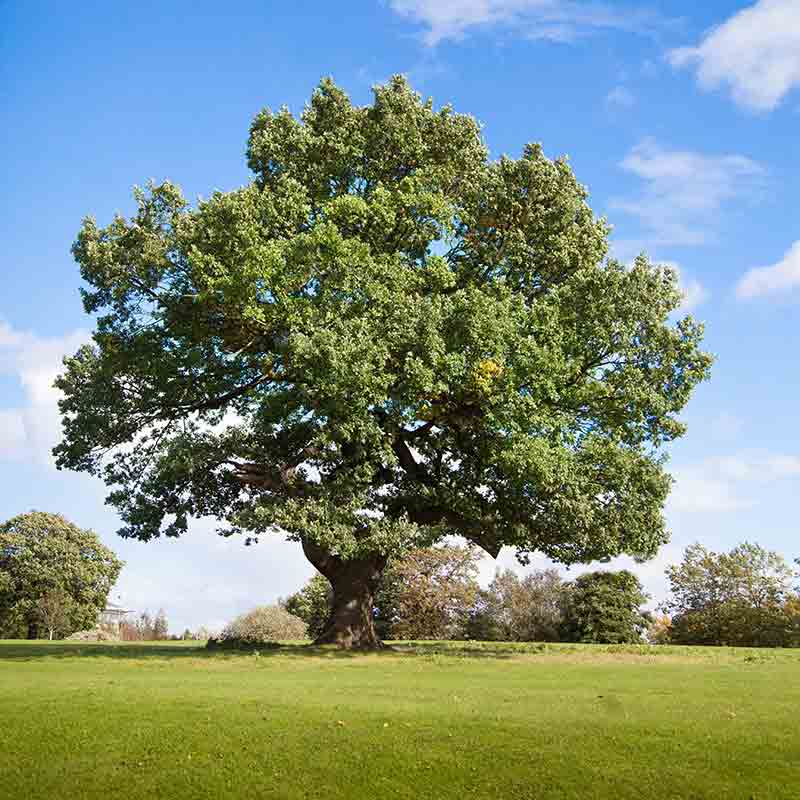
But, not all trees are equally valuable. By selecting species that will thrive and contribute to a home's environment, you may make your property much more appealing to buyers. These five steps will help you decide which new trees to plant near your home in Dallas, TX, and the surrounding areas.
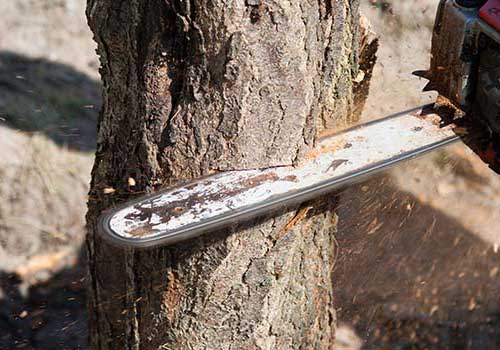
Planting young trees around your home will add curb appeal, but the lack of height and foliage will not help your heating and cooling costs. Therefore, you should plant attractive trees that will grow quickly, producing shade for energy conservation within a few years. This guide, and your contractor's help to maintain, will help you know which attractive, fast-growing and shade-producing trees you should consider for your yard.
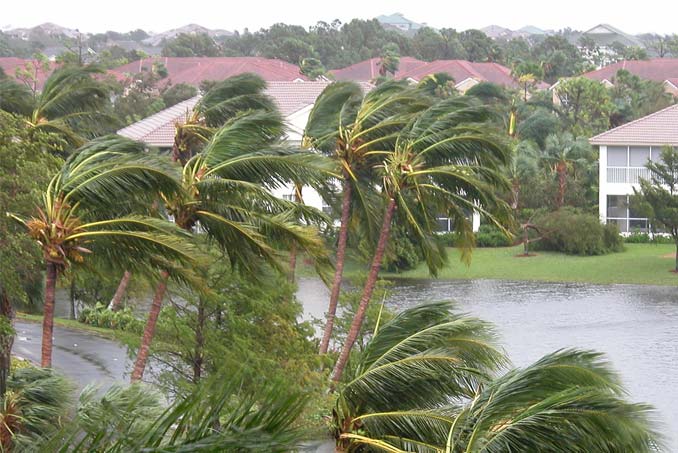

From energy efficiency and added curb appeal to an increase in your home's overall value, it is easy to see the benefits of healthy trees in your landscape design. Unfortunately, many homeowners do not fully understand how to care for their trees. While watering and even fertilizing may be priorities, protecting your trees from different diseases and pests is also important.
Development of Oak Wilt Disease
Once the fungus spreads to the tree's roots, oak wilt disease can be transmitted to other trees near or connected to the same root system.
